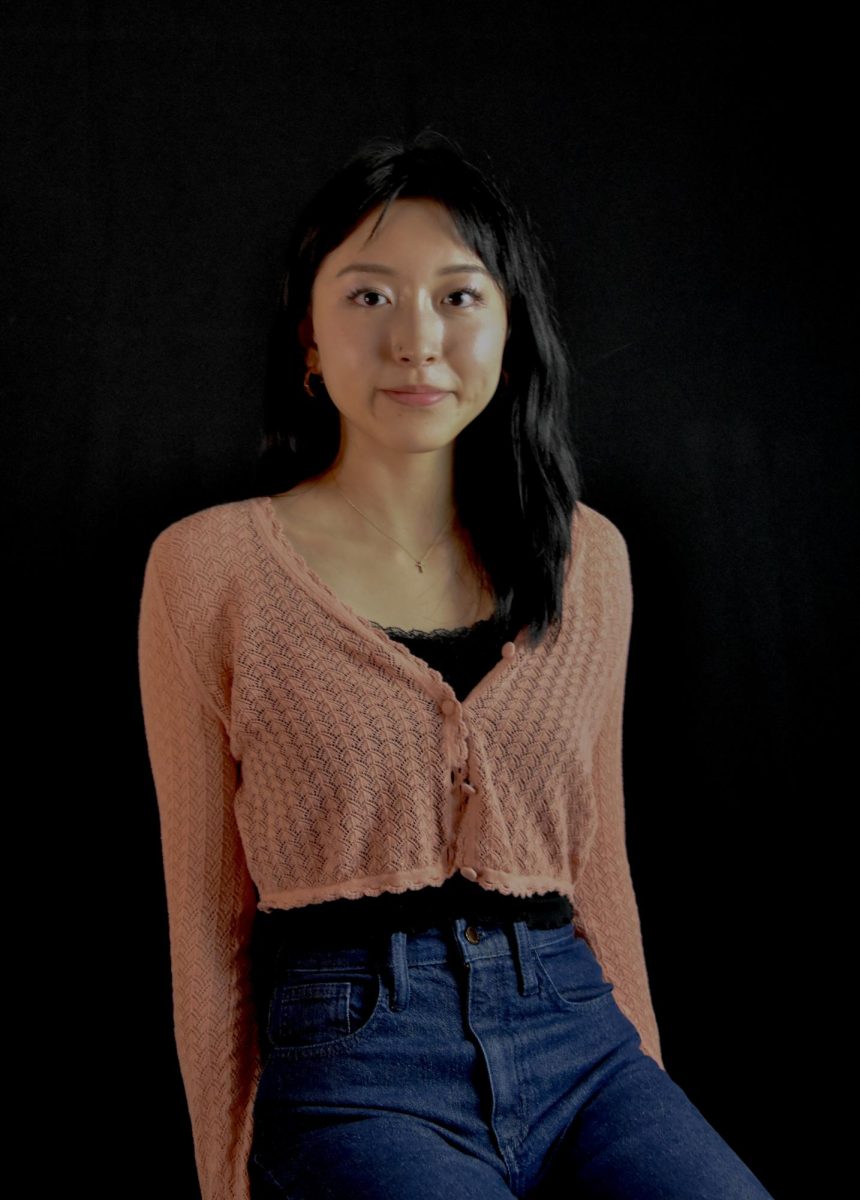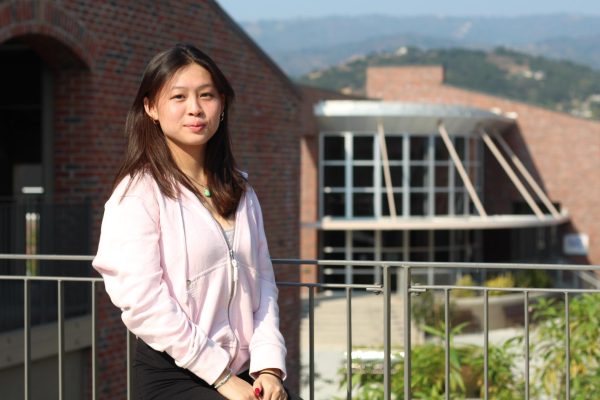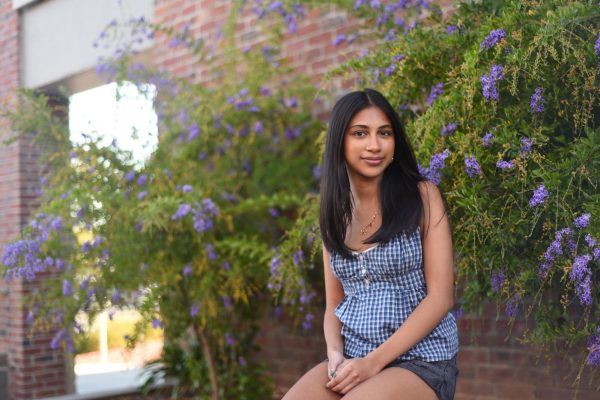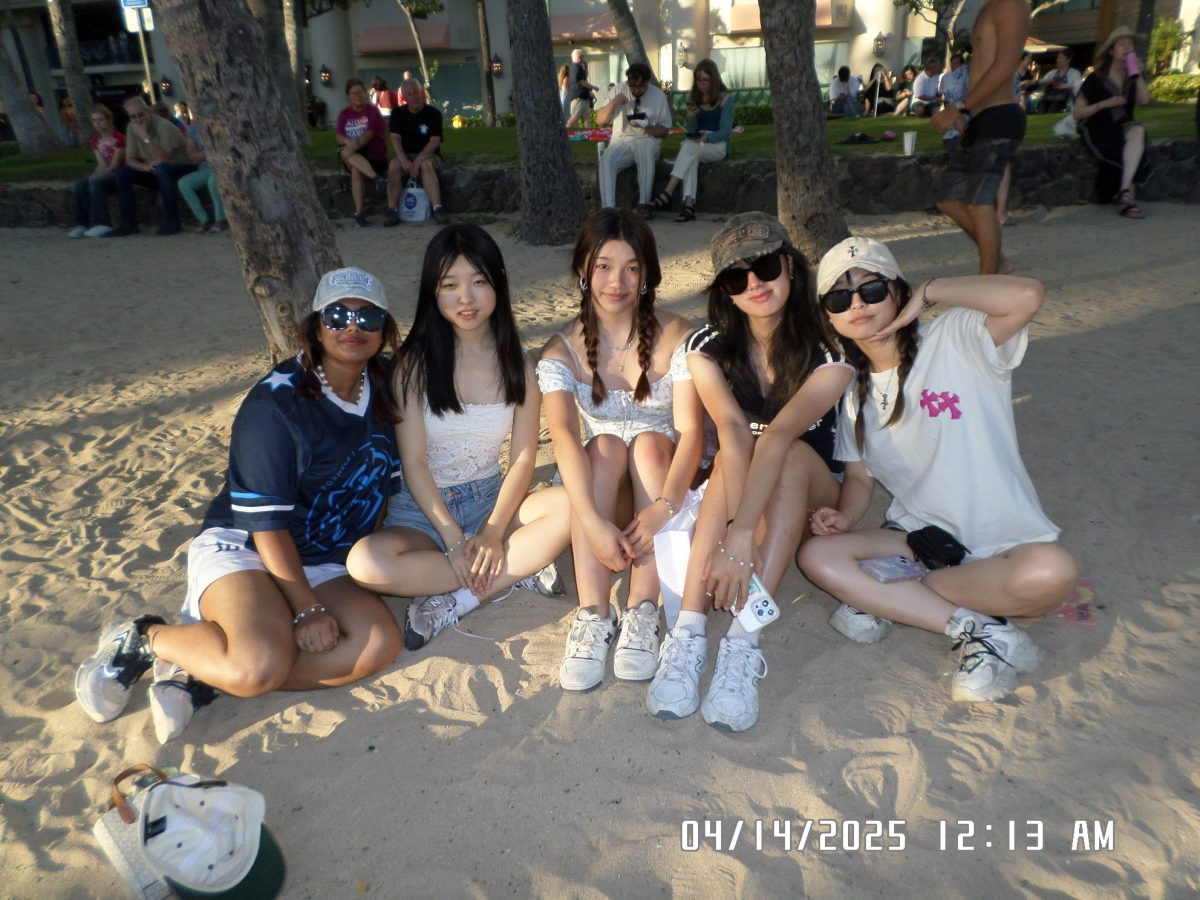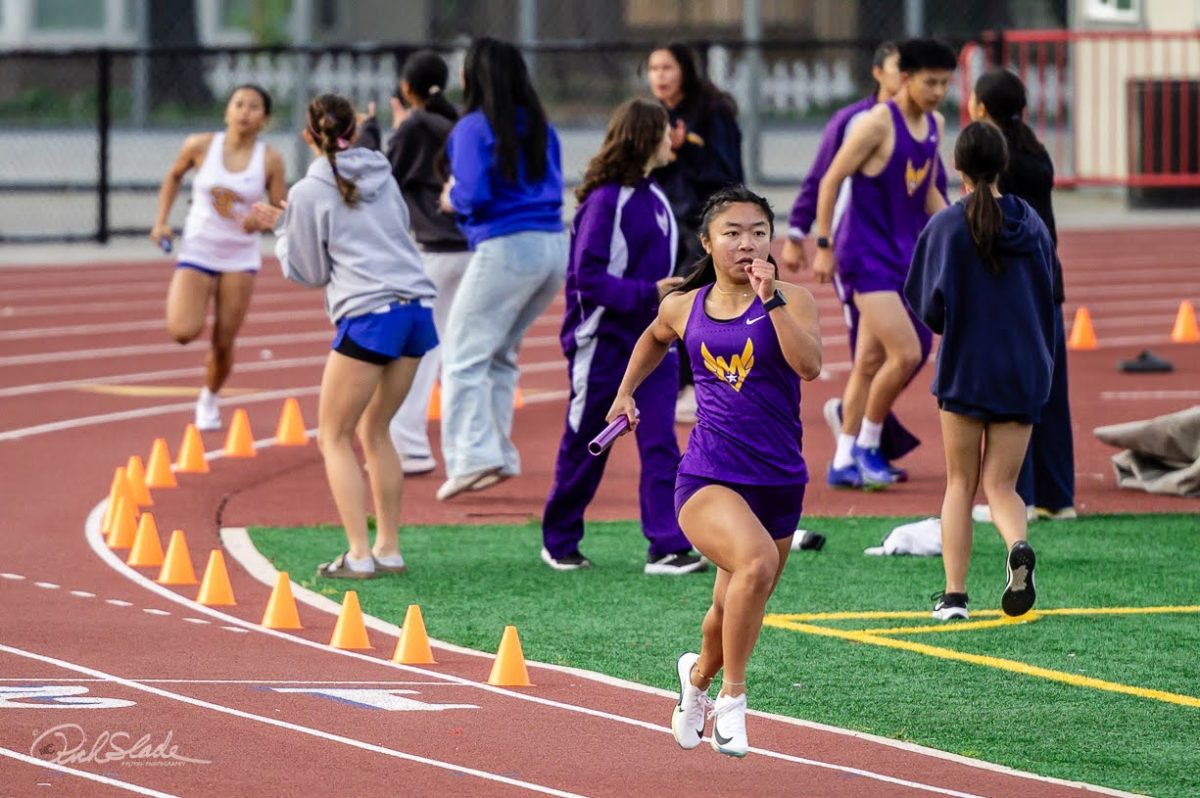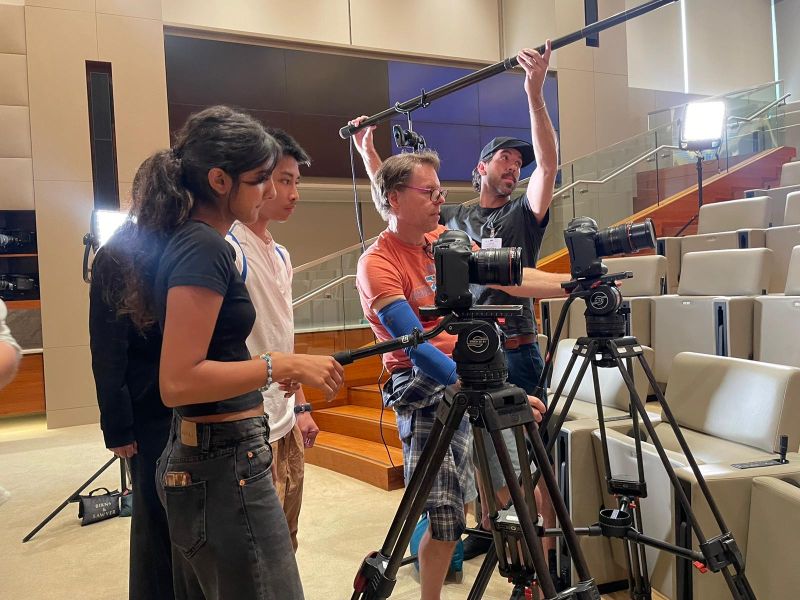During the pandemic, current Homestead High School senior and previous MVHS student Brianna Young was diagnosed with scoliosis. For Young, one of the most impactful parts was having to wear a back brace when going back to school during the period of hybrid learning.
“I had to wear this huge plastic thing and sit in the tiny school chairs,” Young said. “It impacted my self esteem in a way because, prior to that, I was really interested in changing my fashion or my style and then [the brace] impacted what I could wear and whatnot. So I just felt like it was hard to express myself and it was super bulky so [it was] not necessarily something I could hide.”
Although scoliosis comes in many forms, the most common type is adolescent scoliosis which develops during puberty. Young was diagnosed with scoliosis when she was 13 years old. Her spine follows an S-curve, which appears as two twists in the spine, typically a smaller curvature on top and a larger one below.
Although the news of her diagnosis could have been jarring, Young had expected it. She had noticed common symptoms of the condition including back pain and an uneven back profile. However, the news came as a surprise to Young’s mother, Amy Wang.
“Initially, there were some thoughts like, ‘Well, how did we miss this? How did it become so bad?’” Wang said. “It was a condition before it was discovered or before we took her to see a medical professional, so there was a little bit of shock [and] guilt, as a parent. [I was also] just feeling really worried, too.”
According to Young, scoliosis comes with a handful of stereotypes and misconceptions. For example, Young has heard the common misconception that scoliosis can be caused by bad posture, which she learned to be a false statement.
“Sometimes there’s things that play into it, like if you are taller for your age or whatnot, or if you just grow really fast or have growth spurts,” Young said. “But then a lot of people have the misconception that if you don’t sit up straight you’re gonna get scoliosis. It doesn’t work like that.”
Following the diagnosis, Young and Wang both found themselves deep in research, leading to a stronger understanding of scoliosis and what the condition meant for Young’s health. Through her research, Wang also managed to connect with an online support group.
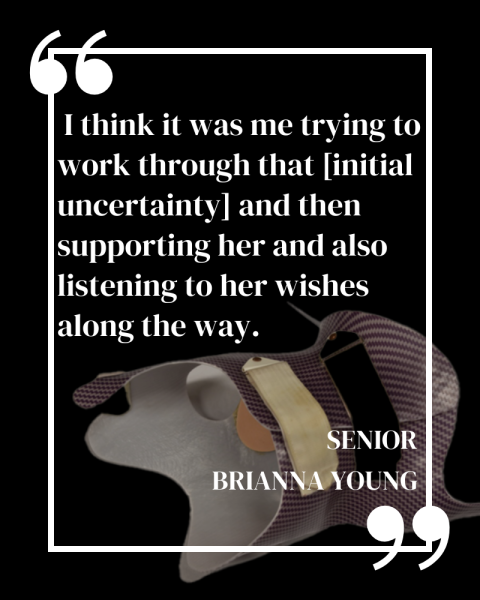
“As a result [of joining the group], it felt less scary because we were able to talk about it and [see] that a lot of other people had the same condition,” Wang said. “I think just knowing what to expect really helped me feel more comfortable with everything [and it was] important for me [to] at least to be part of that community.”
One of the biggest challenges Young faced during her journey with scoliosis was navigating the large number of treatments available to her. From posture-altering devices to physical therapy, scoliosis treatment comes in a variety of different ways. The first professional Young went to was a chiropractor, who helped identify that scoliosis was the issue. After that, Young started bracing, where she wore a plastic device to correct their spine, and then physical therapy to do various stretches and posture correcting exercises.
“Those two types of therapy are ideal for people that are still growing [and] haven’t completely finished puberty,” Young said. “I didn’t enjoy it because it took a lot of consistency and discipline. [The brace was] hard plastic and pretty thick and I’d have to sleep with it. That was honestly kind of hard to breathe [in] and it was just really uncomfortable.”
Young and her doctors also found physical therapy unhelpful, which created an unnecessary expense. The cost of scoliosis treatments added up quickly, making it essential to find a solution. The next tier after physical therapy was surgery, an option that quickly became plausible to Young and Wang after thorough research.
In February of 2022, Young and Wang went to the East Coast to consult with various surgeons. Through Wang’s research and support groups, they found surgeons in New York and New Jersey to speak to.
“As I got more information about [the surgery], I felt less scared [since] finding the right doctors made me feel more comfortable,” Wang said. “[Brianna] was very sure she wanted to get the surgery [but] I was unsure about that initially. It was a bit of a struggle to get myself to also feel OK about her getting such a large, invasive surgery done. I think it was me trying to work through that [initial uncertainty] and then supporting her and also listening to her wishes along the way.”
During the summer of 2022, Young went back to New York to receive anterior scoliosis correction to change the bottom curve, with the hopes that it would help straighten out her top curve. Although it wasn’t the most enjoyable trip because Young was stuck in her hotel room for a majority of the time, Young and Wang describe the surgery as relatively straightforward.
“I would say we did our homework and we felt comfortable with the surgeon and his results and his abilities to do the best that he could, so I would say because of that we were actually pretty calm,” Wang said. “I think different people react differently, but by that time we were ready to go and get it done. [Brianna] was very brave [and] she had shown no real worry or concern at that time.”
For Young, the aftermath of the surgery presented more of a challenge than the actual surgery itself. Some side effects included difficulty walking and nerve pain from the pain medication. Despite these effects, Young appreciates the outcome of the surgery.
“Since surgery, I definitely feel a lot more confident in the way my back is shaped,” Young said. “[After the surgery], the degree of my curves is not 100% perfect — it’s not zero degrees. But it’s definitely in the single digits when before my curves ranged between 50 degrees to 35, [but now] the bottom one’s less than nine degrees and the top one’s about nine degrees, so that’s a big correction.”
Additionally, while Young faced the lingering effects of the surgery, her boyfriend, Brian Park, helped Young through a variety of methods such as giving her back massages and providing her with emotional support.
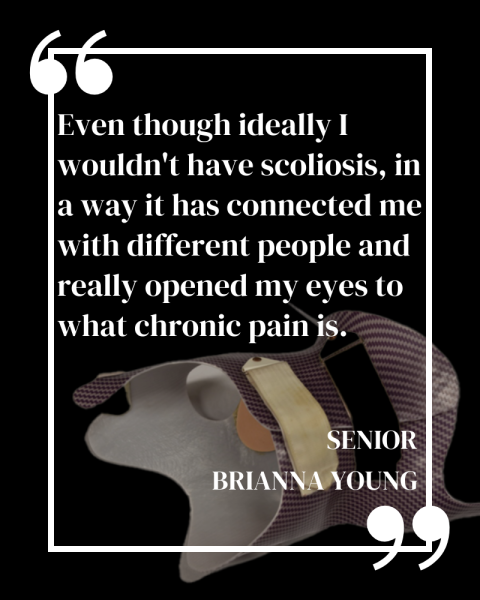
“[This experience] taught me to be able to empathize better and take the role of the supporter,” Park said. “In a relationship, it’s essential for the two partners to support each other. I always try to make her happy, [so I tried to] encourage her and [give] her hope.”
With the support of her family and boyfriend, Young was able to recover in the span of a few months. Additionally, Young’s experience with scoliosis has pushed her to want to pursue a med
ical career in the future.
“I do have health struggles [and] in a way I do associate it with my identity, just because having health issues has really propelled me towards [pursuing] a career path in medicine,” Young said. “It has developed my interest in the medical field and I’m doing my own research on things that I struggle with. [It] makes me want to educate or help others either as a family physician [or in other ways, such as going into] forensic pathology.”
Although Wang and Young initially disagreed on Young’s treatment plan, Wang highlights the importance of supporting her daughter throughout her medical journey. Despite the challenges, Wang is glad that the two were able to get on the same page and work together towards the common goal of helping Young.
“[What I learned is that] foremost, [as a parent,] you’re there to support your child and all of these things that come in the way are things that can be [resolved],” Wang said. “[Overall], our relationship has gotten stronger. Some of the disagreements or certain things are just less important now that [she’s] gone through something so impactful in [her] life. And [I can see] that she’s already come through that side of it [and she’s] working more [on] the next chapter in [her] life [and] putting some of the more challenging parts behind her.”
Young’s experience with surgery has helped improve her confidence in relation to her body. Additionally, scoliosis has also given her a stronger understanding of various medical conditions.
“My overall experience [with scoliosis] has contributed a lot to my knowledge of the human body,” Young said. “Even though ideally I wouldn’t have scoliosis, in a way it has connected me with different people and really opened my eyes to what chronic pain is.”




